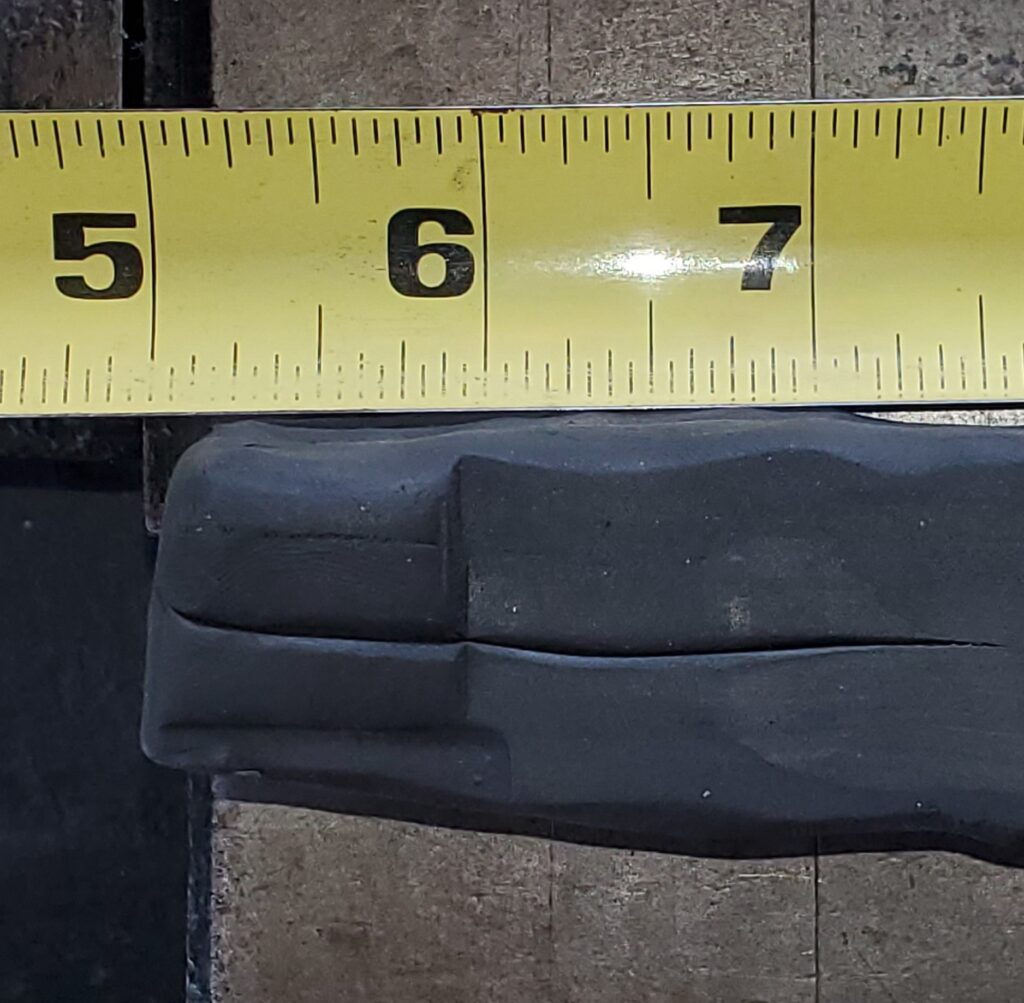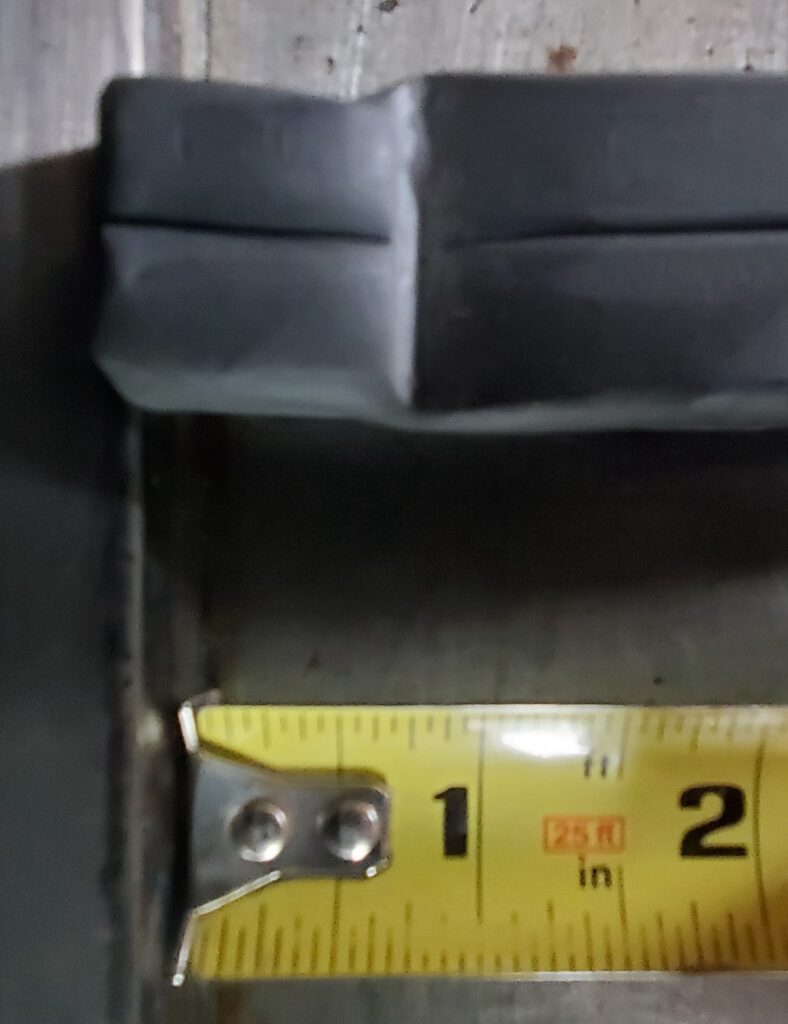When setting up the Mackenzie Printery‘s Whitlock press for this summer’s Marshville Heritage Festival, I noticed that the press bed has a line marked across it clearly labeled “H L”. I assume this stands for “Head Line”, which is the line on the bed which aligns with the leading edge of the sheet of paper (or, perhaps, just clears the grippers).
I had noticed that the actual forme of type on the bed, which was printing at the correct place on the paper, was well over this line and in fact almost hanging over the edge of the bed. I felt this might be an issue with the timing of the press.
I took a copy of the poster that had just been printed, placed it on the inked forme still in the press (in the same orientation as the original impression), with the edge of the paper lined up with the “H L” mark, and rubbed the back of the paper to take a crude impression of the form. The two impressions were about 1⅛″ apart. This made me feel that the bed was off by a tooth in the gearing that drives it. I also took an impression of the bed drive gear using the oil/grease that was on it, and determined that the drive rack had a pitch of ¾″.
Later, when the forme had been removed, I placed some lumps of Plasticine on the press bed to measure exactly how the edges of the impression area of the cylinder lined up with the bed. This required a bit of timing finesse and manual turning of the press to get good measurements rather than just smearing off the top of the Plasticine. This is how things looked at the leading edge; unfortunately, camera perspective distorts the apparent measurements off the measuring tape. The 7″ mark lines up with the “H L” line, and the impression in the Plasticine is about at the 5⅞″ mark, confirming my other measurement. There is another fainter line on the bed ¾″ from the “H L” line, but this seems so faint, it might not be factory-original.
There is another fainter line on the bed ¾″ from the “H L” line, but this seems so faint, it might not be factory-original.
I did the same sort of measurement at the trailing edge, and found that the trailing edge of the cylinder was ¾″ away from the raised edge of the bed (again, perspective distorts the apparent measurement): Together, these observations imply to me that the bed should be shifted one tooth on its rack, so that the printing area of the cylinder lies between the “H L” line and the stop at the foot of the bed.
Together, these observations imply to me that the bed should be shifted one tooth on its rack, so that the printing area of the cylinder lies between the “H L” line and the stop at the foot of the bed.
This ¾″ shift would still leave a ⅜″ discrepancy, but I think this represents the difference between the leading edge of the cylinder and the area that is safe from gripper damage. This allows a generous ⅜″ space for grippers to grab the sheet edge between the cylinder leading edge and “H L”. One of the formes we had been printing has a border all round which we want close to the edge of the paper, so this would have to be placed on the bed beyond the head line, but this is fine because the grippers on the press are set very close to the edge of the sheet.
However, the same timing discrepancy might also be caused by the cylinder itself being out of position by one tooth so I would like to do a bit more research before actually shifting the bed. The grippers and sheet lifters are all driven by the cylinder itself and would not be affected by retiming the cylinder, but changing the timing these two ways would have subtle differences in the relative motion of the cylinder and bed, particularly on the bed’s return stroke. I would have to look closely at the relative timing of the bed motion vs. when the cylinder lowers to impression height and rises again.
Changing the timing would mean that printing close to the end of a full-height sheet would require the forme to be right against the raised edge at the foot of the bed, with no room for a chase. As things stand currently there is ¾″ of room for a chase frame.
There is another Whitlock press in Cumberland, near Ottawa, and although it is not identical (it does not have the reversing stacker), I’m hoping the bed and cylinder motion are the same. I’d like to get the chance to visit it and make some measurements on it next time I’m in the area. I could measure the actual limits of the bed’s motion, and also observe the cylinder position when the bed stops moving at either end of its stroke.

Leave a Reply